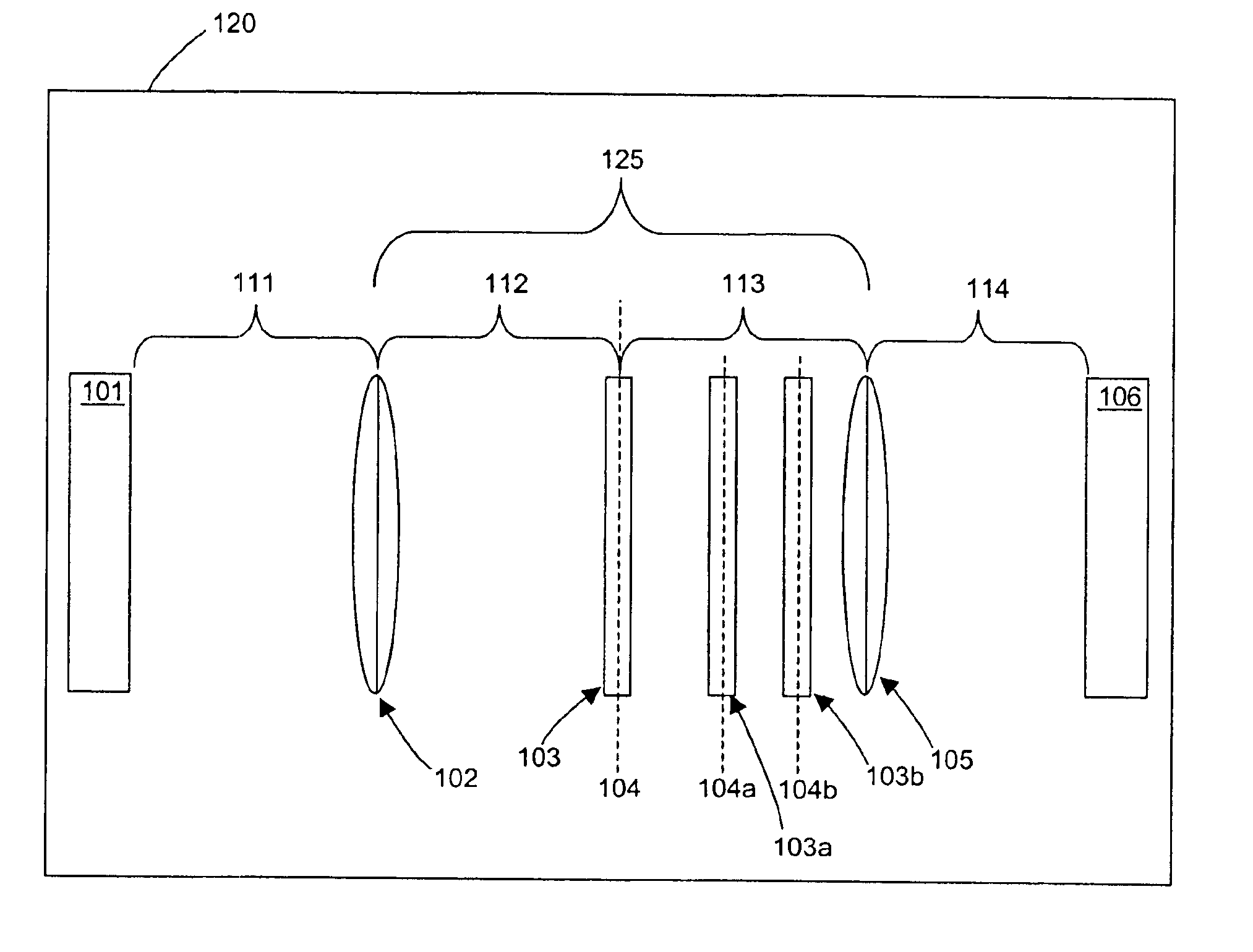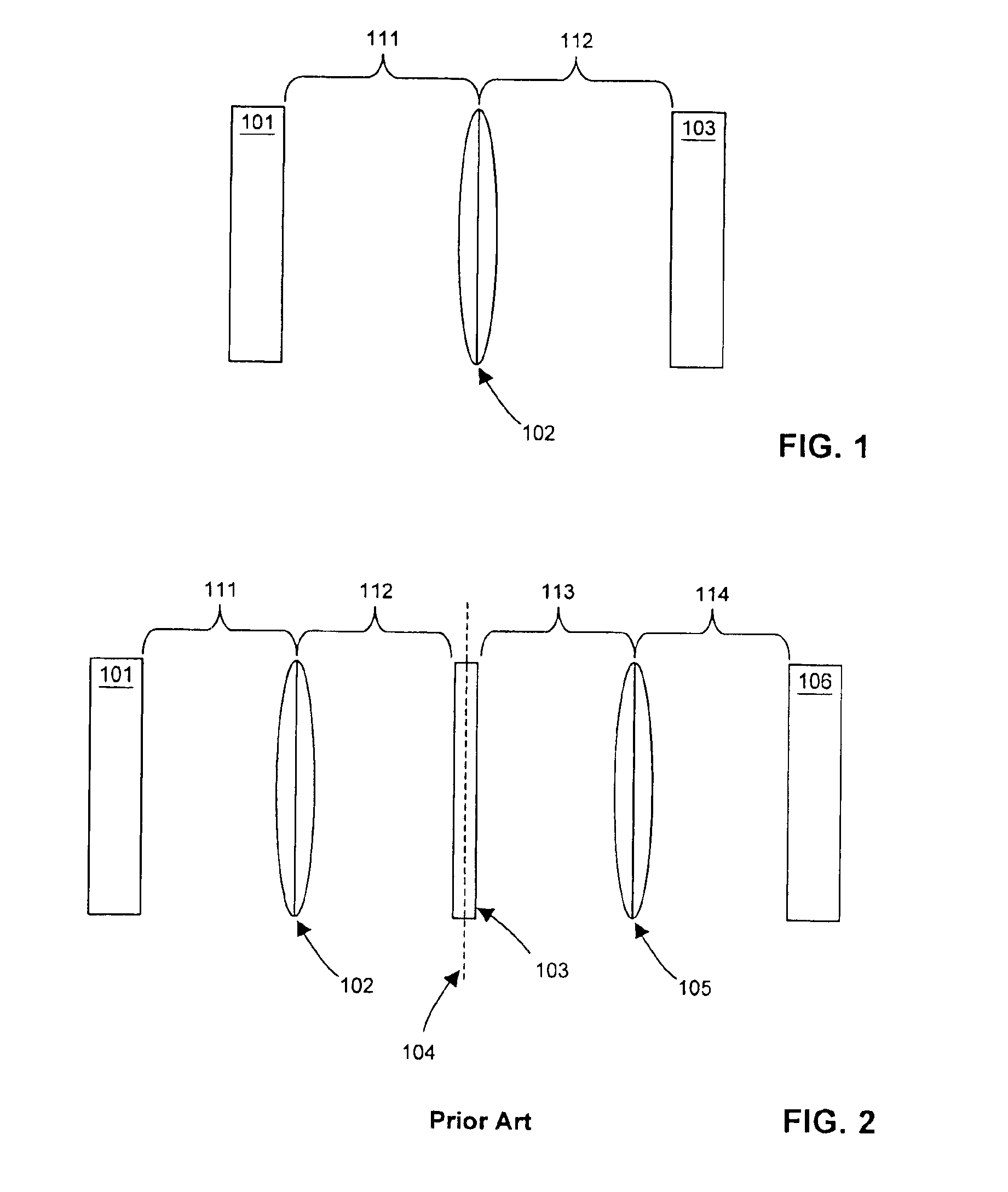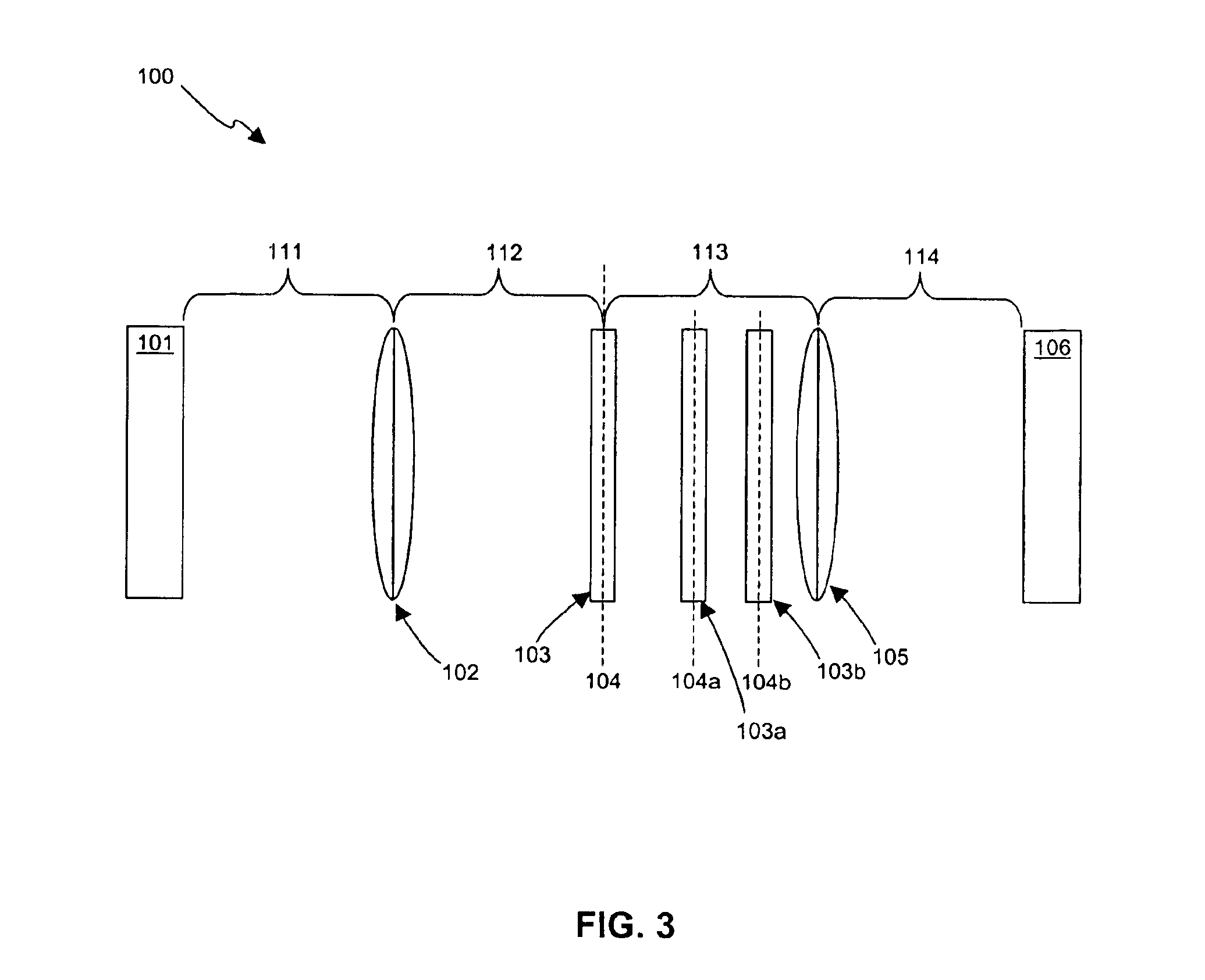Non-positive-definite optical filtering from positive-definite transfer functions
- Summary
- Abstract
- Description
- Claims
- Application Information
AI Technical Summary
Benefits of technology
Problems solved by technology
Method used
Image
Examples
Embodiment Construction
[0030]The invention is concerned with processing presented image data, either recorded or real-time provided by an exogenous system, means, or method. This image data can be presented by means of an electronic display (such as an LCD panel, CRT, LED array, or other technologies), films, slides, illuminated photographs, or the output of some exogenous system such as an optical computer, integrated optics device, etc. The presented image data will herein be referred to as the image source. The invention is also concerned with image data then produced by the invention which is presented to a person, sensor (such as a CCD image sensor, photo-transistor array, etc.), or some exogenous system such as an optical computer, integrated optics device, etc. The latter image presentation receiving entity will herein be referred to as a observer, image observation entity, or observation entity.
[0031]FIG. 1 shows a general arrangement involving an image source 101, lens or lens system or other equ...
PUM
 Login to View More
Login to View More Abstract
Description
Claims
Application Information
 Login to View More
Login to View More - R&D
- Intellectual Property
- Life Sciences
- Materials
- Tech Scout
- Unparalleled Data Quality
- Higher Quality Content
- 60% Fewer Hallucinations
Browse by: Latest US Patents, China's latest patents, Technical Efficacy Thesaurus, Application Domain, Technology Topic, Popular Technical Reports.
© 2025 PatSnap. All rights reserved.Legal|Privacy policy|Modern Slavery Act Transparency Statement|Sitemap|About US| Contact US: help@patsnap.com



